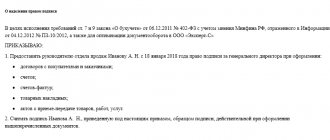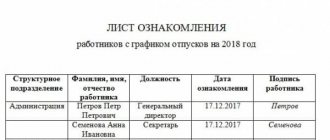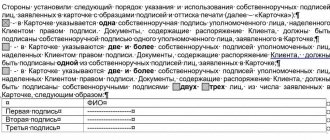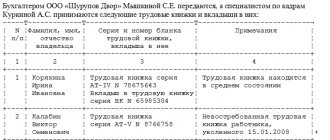It is often difficult to choose the appropriate one from the words “signature” or “painting”. They are mistakenly replaced with each other not only in everyday communication, but also in written official speech. This is not surprising, because the pair of lexemes in question are paronyms (that is, they have a similar sound, but a different meaning).
Note that these are single-root nouns that differ in the prefixes “under” and “ros”. It is these morphemes that give each of them a certain connotation. In order to use these words appropriately, you need to determine their lexical meaning, as well as find out in what area they function. We will answer these questions below.
In what cases is the word “signature” written?
The most common meaning of the lexeme “signature” is a way of identifying a person. These are handwritten unique characters that have a strict sequence (mostly initials or part of a person's last name). The signature is the main requisite of business papers; it gives legal force to many documents.
The analyzed word should be used if the sentence refers to the need to sign a document. Note that this noun can also be used in fine arts and architecture when talking about the authorship of a painting or sculpture.
Example sentences
Reading sentences that use the problematic word “signature” will help you quickly understand and remember the rule:
- The teacher left documents in the principal's office for signature.
- The bank employee asked to sign the application.
- The marine painter put his signature in the right corner of the canvas.
- The new employee was introduced to the basic rules of the enterprise against his signature.
Do we sign or sign the document?
The meaning of the word "signature"
The noun “signature” is formed from a cognate verb:
sign → signature
Let us clarify the lexical meaning of the analyzed word:
- Action by value Ch. sign
- An inscription on smth. under smb.
- Handwritten surname under the text, drawing, etc. to confirm your authorship or agreement with something.
T. F. Efremova. New dictionary of the Russian language. M., Russian language, 2000
Here is how the word “signature” is used in literary texts:
I never set foot in the office again, so bring all the papers for signature and so on to my room (Jack London. Time-no-wait).
Here it is, the signature that was missing on that mysterious letter that he received last month (Alexandre Dumas. Two Dianas).
Use of the word "painting"
The noun “painting” is ambiguous. Its lexical meaning may vary depending on the area of use. The word is usually used when talking about decorative painting. In this context it means "to put a design on something." This kind of decoration is applied outside or inside the building (floor, walls, ceiling), as well as on various household items (dishes, furniture) and natural materials (wood).
The lexeme in question has another meaning - “division of something”, “list”, “list”. It can acquire such a meaning, for example, in the field of judicial records management.
Example sentences
Reading contexts with the noun “painting” will help to better consolidate the information:
- Wood painting is a craft that is still relevant in Russian villages (in the 1st sense).
- Tourists paid attention to the painting on the walls of the ancient temple (in the 1st meaning).
- The summary list will depend on the budget (in the 2nd value).
- The secretary was instructed to check the list of state revenues (in the 2nd digit).
Types of paronyms
Many authors describe the concept of paronyms quite broadly. Researchers include in their list not only words with the same root, but also any words that sound similar, even if they have different roots. Examples of paronyms with a single stem are the words “painting” or “signature”. And expressions that have different roots, but are also sometimes referred to as paronyms, are, for example, “drill” or “trill”, “minced meat” or “farce”. As a rule, the meaning of words that have the same roots is most often confused.
Paronyms are not words that have a common historical basis, but have lost connections with each other in their modern sound. These include the concepts of “tuber” or “strawberry”.
Paronyms are divided according to the following criteria:
- Distinguished by prefixes (“painting” or “signature”).
- Distinguished by suffixes (“essence” or “being”).
- Paronyms consisting of words, one of which has an original stem, and the other a derivative of it with a prefix or suffix (“growth” or “age”, “inhibition” or “braking”).
Most of the paronyms are close to each other in meaning; however, when using them in speech, it is important to observe the subtle semantic connotation of these words. Such paronyms include the words “long” or “long”, “signature” or “signature”, “diplomatic” or “diplomatic”.
Use of the verb "sign"
The reflexive verb “sign” means “to put your signature to acknowledge or certify something.” Due to the fact that the analyzed verb is consonant with the noun “painting,” many people say incorrectly: “put your signature.”
The words “sign” and “subscribe” are synonymous.
Example sentences
Let's consider contexts for memorization:
- Ilya Petrovich was called to work to sign the documents.
- The storekeeper signed for the products received.
- Nina signed the payroll.
- At the store they politely asked me to sign the receipt.
How to write an application correctly - Rules for registration
According to these rules, the application must have five mandatory parts:
- Name.
- Date and month of writing.
- Information about the applicant and the addressee of the application (the so-called “header” of the application).
- Painting.
- A request or proposal formulated in a business form.
A sample application form is shown below.
In the upper right corner you must write for whom this document is intended and who signed it:
- Business name;
- job title;
- surname and initials.
- Addressee information. Since the application relates to an official document, it is imperative to provide complete information about the recipient:
Moreover, the position and surname of the addressee must be written in the dative case (the question “to whom?” is asked).
Paronyms in fiction
Paronyms are widely used in fiction, performing various functions. Many examples of the correct use of such words can be found in A.S. Pushkin, who very skillfully conveyed the real meaning of each expression. This is evidenced, for example, by the following quote: “Wearing a wide bolivar, Onegin goes to the boulevard.”
A writer may also deliberately use paronyms incorrectly. This use of words is intended to point out the mistakes of the heroes and give a detailed description of them.
The use of paronyms in poetry is also very appropriate. They allow you to clearly highlight the meaning of a particular word and achieve harmony of sound. A striking example is the use of paronyms by V. Khlebnikov: “A brand of dark glory, not empty and not hateful, but tired and cold, I sit. Warm me".
How to avoid becoming a victim of a forged signature
In the age of digital signatures, PIN codes, fingerprint and iris recognition, the main and almost only personal identifier remains the good old autograph in ink on paper. To conclude most transactions today, neither notaries confirming the identity of the signatory nor other witnesses are required. If there is a squiggle, it means the piece of paper acquires the force of a document. Such obvious simplicity has led to a wave of fraud related to signature forgery. According to the Ministry of Internal Affairs, more than 57 thousand handwriting examinations were carried out in 2017.
ANOTHER SQUEET IN EXCHANGE FOR MONEY
Most often, signatures are forged by relatives or friends. After 10 years of marriage, Vasily decided to get a divorce. “It was then that it turned out that the wife took out a loan from the bank. She forged my signature on the contract, and I became a co-borrower. If she can’t repay the debt to the bank, it will be pinned on me,” the ex-husband laments. He reported the fraud to the bank.
It happens that bankers themselves forge client signatures, filing millions of debts on people. Allegedly, the loan was issued to the borrower, but in reality the funds were withdrawn from the bank. This is also done in order to demonstrate good reporting to the Central Bank. Thus, former police officer and head of the detective agency “Two Lives” Ekaterina Shumyakina recalls how Vneshprombank put a loan of 20 million rubles on her.
— I received a letter saying that this bank’s license had been revoked, and now I have to pay money on a loan to another bank. And I didn’t take out any loan! “I wrote a statement to the police,” says Ekaterina.
A handwriting examination proved that the signature on the contract was not hers, and the claims were dropped. One can only guess where the bank got Ekaterina’s personal data and a sample signature: you never know where they had to provide a scanned copy of the passport. “My signature is very simple - perhaps that’s why they chose it,” notes Ekaterina.
Then it turned out that the management of Vneshprombank issued many fictitious loans. And the hole in the bank’s balance sheet amounted to almost 200 billion rubles.
But another revolutionary, Che Guevara, seemed to trust people: in the museum you can admire his simple strokes. Photo: GLOBAL LOOK PRESS
HANDWRITING FROM THE OTHER WORLD
- Any attempt to forge someone else's handwriting fails. The expert will determine whether this person signed or someone signed an autograph for him,” General Director Vitaly Demin is sure.
It is impossible to accurately copy all the nuances of a signature. Each handwriting has many features. They are invisible to the common man, but obvious to handwriting experts. One press has hundreds of variations. And then there are spaces, connecting letters, indents that a person makes from the beginning of the sheet, slanting.
But will the examination find all the differences between the fake and the original? Is not a fact.
— It is impossible to completely exclude the recognition by an expert of a forged signature as a real one. For an objective conclusion, comparative handwriting samples must be obtained from a person at different times and in different circumstances: sitting, standing, hanging. But if you have doubts about the results of the examination, you can repeat it. For providing a false conclusion or losing a sample document, the expert bears criminal liability, says Alena Zelenovskaya, a lawyer at the Amulex legal service.
Taking handwriting samples for examination is not difficult when a person is alive. But how to prove, for example, that the will was fake? The handwriting expert needs to bring something written and signed by the deceased. Preferably dated approximately the same time as the will. It happens that there are not enough handwriting samples for examination.
According to lawyer Dmitry Zatsarinsky, the court always takes into account the conclusion of a handwriting expert, but it is not decisive for reaching a verdict. All evidence is assessed in its entirety. Witness statements, bank statements and a bunch of other evidence may be considered.
The more papers, the calmer.
GAVE IN DEBT AND LOST EVERYTHING
General Director Vitaly Demin described a fraudulent scheme where a swindler “forges” his own signature.
Vanya asks Petya for a loan. We agreed to meet the next day at the office. The day before, Vanya’s acquaintance Seryozha writes a receipt on his behalf for the receipt of money. In the office, Vanya himself writes another version of the receipt in front of Petya. Then, under some pretext, he leaves the office with this piece of paper and returns with another one, which Seryozha wrote. It is clear that after a while Vanya does not repay the debt. Petya goes to court with a receipt. A handwriting examination is ordered, which proves that Vanya did not write anything.
“A receipt written in your presence should not be left out of sight; it must be taken away immediately,” recommends Demin.
Real estate buyers are being scammed using a similar scheme. Ekaterina Shumyakina’s client bought an apartment, but the seller did not sign the documents in his presence. The realtor brought them. After some time, the transaction was challenged on the grounds that the signature did not belong to the seller.
— The unfortunate buyer went all the way to the Supreme Court, but still his claim was denied. The judge understood everything, but the law is the law. And the man lost his apartment. Always make sure that all documents are signed in front of you,” comments Shumyakina.
Tips "KP"
DIDN'T SIGN - GOING TO JAIL?
Forgery of a signature carries a criminal penalty: a fine or imprisonment for up to four years. But only if there was selfish intent or the act had grave consequences such as the death of a person. Otherwise, no punishment will follow: for example, when an accountant signed for the manager with his consent and took the documents with the correct numbers to the tax office.
“If the document does not have legal force, that is, it does not provide any rights and does not relieve one from obligations, then there will be no criminal liability,” explained lawyer Dmitry Zatsarinsky.
— It is a criminal offense to forge a signature on a loan agreement, on a land survey plan, on a receipt for receipt of funds, etc., provided that these documents were presented for registration or collection. If we talk about falsifying official documents (safety precautions, time sheets), then they can also be prosecuted for this. But only if they prove that the person had some kind of personal interest in counterfeiting them,” comments Anton Palyulin, managing partner of the Palyulin and Partners legal bureau.











